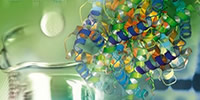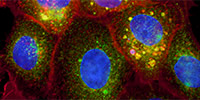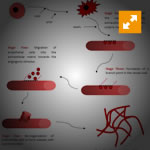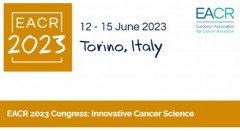ANGIOGENESIS
Angiogenesis is the development of new blood vessels and occurs during normal development and in some disease states. In normal physiology, angiogenesis has a role in embryogenesis, the female reproductive cycle, wound healing and bone formation.
In many disease states, angiogenesis is a key target for pharmaceutical intervention. In a number of pathological states, including tumour development and progression, diabetic retinopathy, rheumatoid arthritis and psoriasis, blood vessel formation is excessive, and the aim of pharmaceutical intervention is to inhibit the process. Conversely, in wound healing and coronary artery disease, the aim is to stimulate new vessel formation. Therefore, angiogenesis is a common factor in a wide range of diseases affecting many millions of people worldwide, and much research is focused on stimulating or inhibiting the process of angiogenesis.
Click here for a pdf of the following useful review:
Carmeliet, P (2003). Angiogenesis in health and disease. Nature Medicine 9(6): 653-660.
Click on the following link to download a series of angiogenesis reviews from a special issue of Nature Reviews Cancer (2008): http://www.nature.com/nrc/focus/targeting_ang/.
Angiogenesis is controlled by a number of growth factors and inhibitors. Well-known angiogenic (stimulatory) growth factors include basic Fibroblast Growth Factor (bFGF), Granulocyte Colony-Stimulating Factor (G-CSF), Interleukin-8 (IL-8), Transforming Growth Factors alpha and beta (TGF-α and TGF-β) and Vascular Endothelial Growth Factor (VEGF). Angiogenic inhibitors include Angiostatin; Interferons (alpha, beta and gamma), Endostatin, Interleukin-12 (IL-12) and retinoids.
Angiogenesis is a multi-step process. The key stages are summarised in the following schematic diagram.
Angiogenesis is a Multi-Step Process:
Therapeutic compounds act on one or more of the key stages to stimulate or inhibit the pathway. Approved drugs acting on angiogenesis include Avastin (bevacizumab), a monoclonal antibody that binds biologically active forms of VEGF and prevents its interaction with VEGF receptors (VEGFR-1 and VEGFR-2), thereby inhibiting endothelial cell proliferation and angiogenesis. Avastin is approved for use in colorectal cancer, advanced breast cancer and non-small cell lung cancer (NSCLC). Three tyrosine kinase inhibitors of the EGF receptor or the VEGF receptors are approved as anticancer therapies, including Sutent (sunitinib) for renal cancer. Regranex (becaplermin) stimulates angiogenesis and is approved for diabetic foot ulcers. Macugen (pegaptanib), with anti-VEGF properties, is used to treat age-related macular degeneration.
Angiogenesis models used in research and development should ideally incorporate each key stage, in order to assess the potential for multiple effects at different points. The table below lists the key stages of angiogenesis (also shown in the schematic diagram above), along with examples of relevant markers for each stage:
| Key Stage | Markers |
|---|---|
| Stage One: Endothelial cell activation in response to angiogenic factors. | Basic Fibroblast Growth Factor (bFGF): a potent stimulatory factor for endothelial cell migration and proliferation. Vascular Endothelial Growth Factor (VEGF): initiates cell proliferation and migration. |
| Stage Two: Degradation of the capillary wall by extracellular proteinases. | Matrix Metalloproteinases (MMPs): MMP1 (a collagenase) and MMP2 are expressed during angiogenesis and act to degrade extracellular matrix components. |
| Stage Three: Formation of a branch point in the vessel wall. | Integrins: expressed on newly forming vessels. |
| Stage Four: Migration of endothelial cells into the extracellular matrix towards the angiogenic stimulus. | Integrins: allow migrating endothelial cells to interact with specific components of the surrounding matrix. MMPs and urokinase: aid migration of endothelial cells into the surrounding matrix. |
| Stage Five: Re-organisation of endothelial cells to form tubules with a central lumen. | Angiopoietin (Ang 1): produced by surrounding stromal cells; facilitates endothelial cell survival and stabilisation of new capillary tubes. |
| Stage Six: Interconnection of the new tubules to form a network (anastomosis). | Platelet Derived Growth Factor (PDGF): produced by endothelial cells of the new capillaries; recruits pericytes which stabilize the new vessels. |









